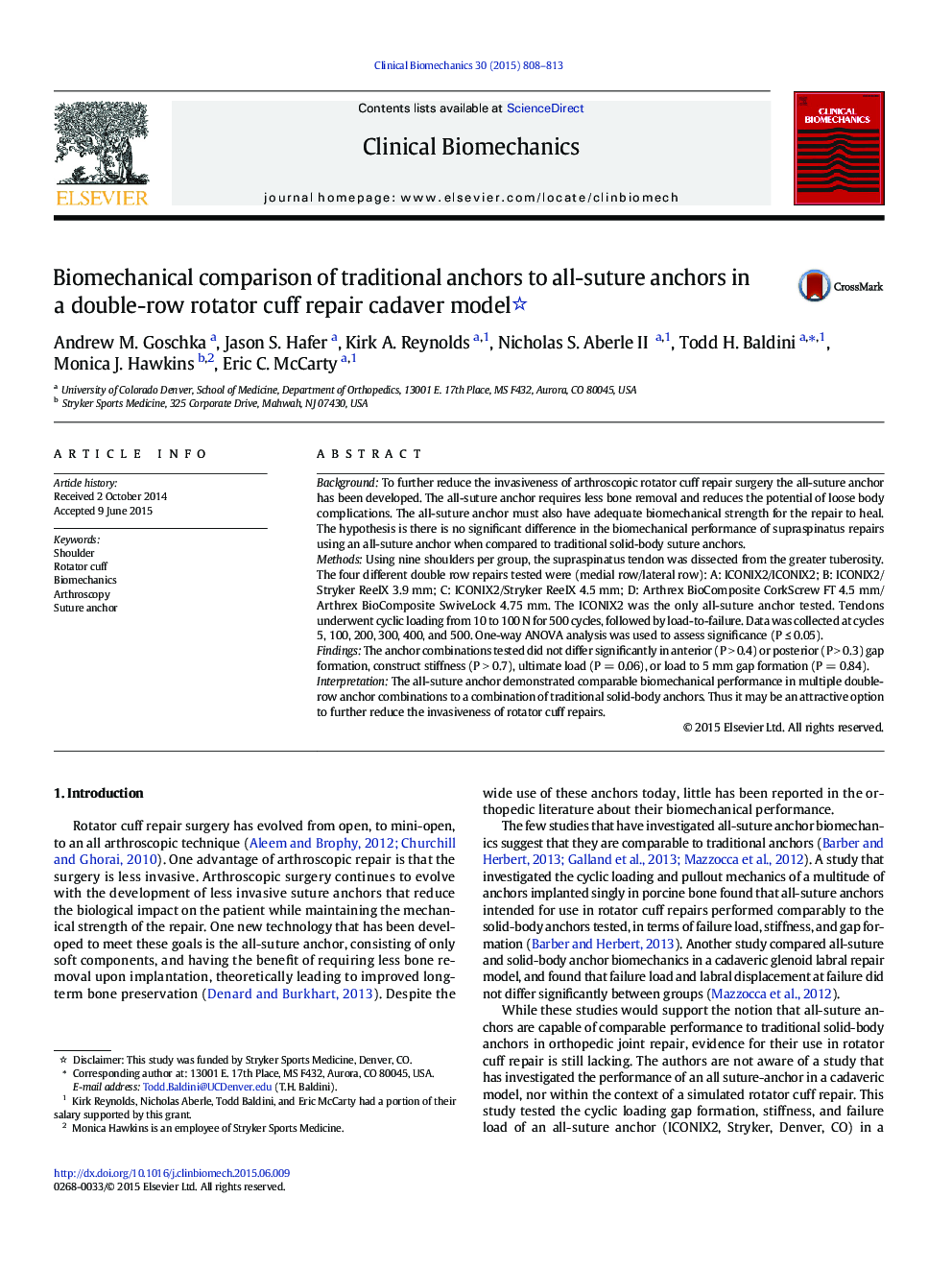| کد مقاله | کد نشریه | سال انتشار | مقاله انگلیسی | نسخه تمام متن |
|---|---|---|---|---|
| 6204684 | 1264910 | 2015 | 6 صفحه PDF | دانلود رایگان |

- All-suture anchors were compared to solid body anchors in a rotator cuff repair cadaver model.
- All-suture anchors require less bone removal than traditional solid body anchors.
- There was no significant difference in the biomechanical performance of the anchors tested.
BackgroundTo further reduce the invasiveness of arthroscopic rotator cuff repair surgery the all-suture anchor has been developed. The all-suture anchor requires less bone removal and reduces the potential of loose body complications. The all-suture anchor must also have adequate biomechanical strength for the repair to heal. The hypothesis is there is no significant difference in the biomechanical performance of supraspinatus repairs using an all-suture anchor when compared to traditional solid-body suture anchors.MethodsUsing nine shoulders per group, the supraspinatus tendon was dissected from the greater tuberosity. The four different double row repairs tested were (medial row/lateral row): A: ICONIX2/ICONIX2; B: ICONIX2/Stryker ReelX 3.9 mm; C: ICONIX2/Stryker ReelX 4.5 mm; D: Arthrex BioComposite CorkScrew FT 4.5 mm/Arthrex BioComposite SwiveLock 4.75 mm. The ICONIX2 was the only all-suture anchor tested. Tendons underwent cyclic loading from 10 to 100 N for 500 cycles, followed by load-to-failure. Data was collected at cycles 5, 100, 200, 300, 400, and 500. One-way ANOVA analysis was used to assess significance (P â¤Â 0.05).FindingsThe anchor combinations tested did not differ significantly in anterior (P > 0.4) or posterior (P > 0.3) gap formation, construct stiffness (P > 0.7), ultimate load (P = 0.06), or load to 5 mm gap formation (P = 0.84).InterpretationThe all-suture anchor demonstrated comparable biomechanical performance in multiple double-row anchor combinations to a combination of traditional solid-body anchors. Thus it may be an attractive option to further reduce the invasiveness of rotator cuff repairs.
Journal: Clinical Biomechanics - Volume 30, Issue 8, October 2015, Pages 808-813